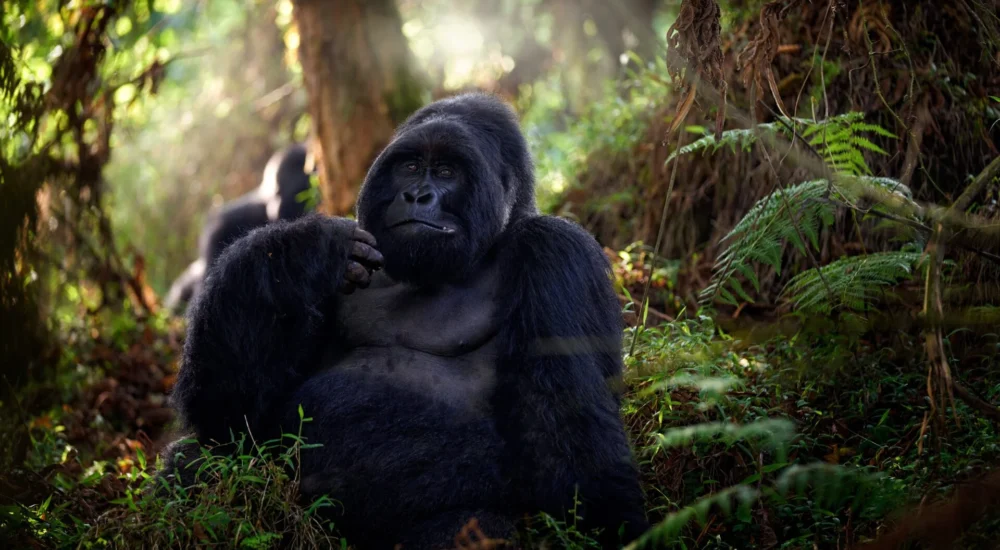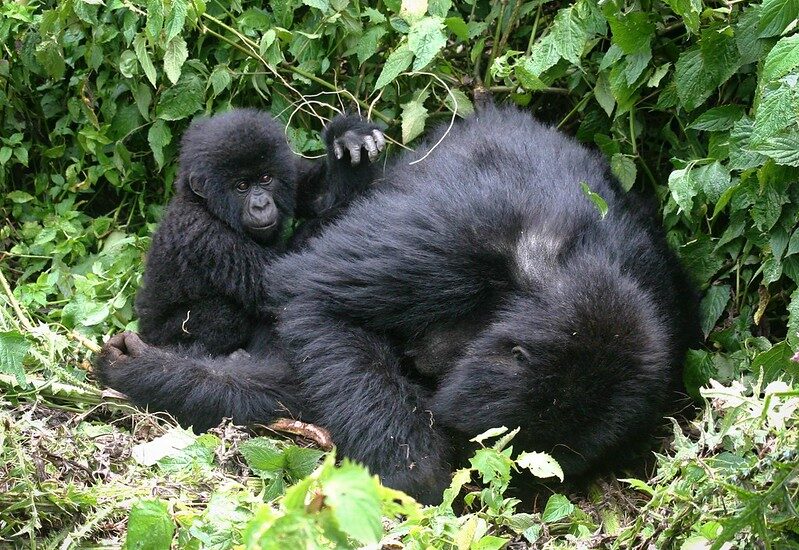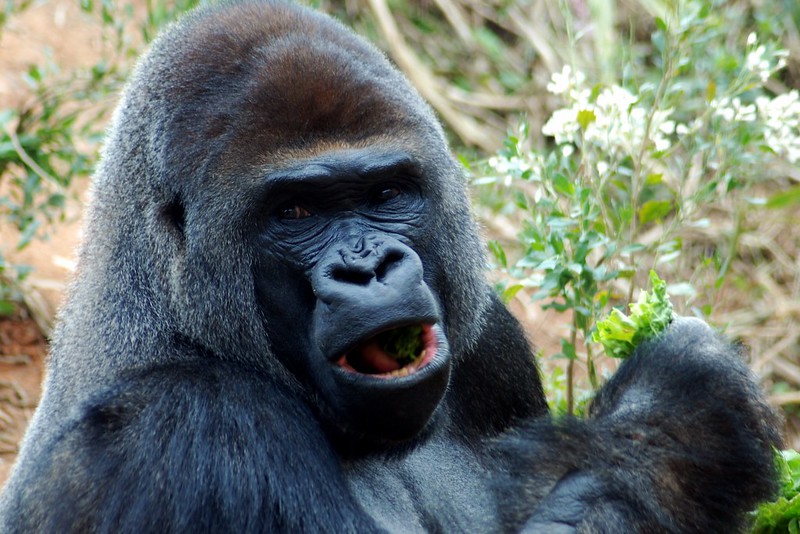Gorillas in the wild are called "gentle giants" because they are the biggest living animals…
Birds of Uganda and important birding sites in Uganda
Birds of Uganda and important birding sites in Uganda, Africa’s gem, is a breathtaking tourist destination. The nation is endowed with an abundance of wildlife that is scattered throughout a variety of attractive settings. The nation has 13 landscape categories and 22 primary vegetation types (with 96 subtypes), making it a small treasure with over 18,783 flora and fauna species! Although these landscapes are well-known for their biodiversity, they are really part of a larger scale of ecosystems and habitats. These birds of Uganda’s habitats are dispersed over the country, forming a lasting magnificence abounding with an extraordinary diversity.
![]() The natural systems vary from the snow-capped peaks of the Rwenzori Mountains to the high-altitude montane forests, the open waters of various lakes, the spectacle of islands, the unique combination of semi-arid woodlands, savannah and forest communities, the wealth of montane vegetation, and the forest-fringed crater lakes that stud the rift valley floor and escarpments. The nation boasts an exceptional amount of diversity in both terrestrial and aquatic ecosystems, and it differs by race, gender, flora and wildlife.
The natural systems vary from the snow-capped peaks of the Rwenzori Mountains to the high-altitude montane forests, the open waters of various lakes, the spectacle of islands, the unique combination of semi-arid woodlands, savannah and forest communities, the wealth of montane vegetation, and the forest-fringed crater lakes that stud the rift valley floor and escarpments. The nation boasts an exceptional amount of diversity in both terrestrial and aquatic ecosystems, and it differs by race, gender, flora and wildlife.
These various habitats are thus punctuated by a plethora of distinct flora and fauna and are known to sustain a large variety of bird species. With over 50% of Africa’s bird richness and 11% of the world’s bird population, the country is home to an estimated 1061 bird species, making it the premier African birding safari destination. 15 bird species in the nation are endangered, 11 are vulnerable, and others are threatened at both the global (e.g., Shoebill B. rex, Grey-crowned Crane B. regulorum) and regional (e.g., White-backed Night Heron G. leucocytes, Rufous-bellied Heron A. rufiventris) levels.
There are a number of regions in the nation that are known to be home to a staggering amount of birds. Birding International has designated these locations as Important and Endangered Bird Areas because they are of considerable importance. Uganda is reported to contain three endemic bird areas (EBAs). The Albertine Rift highlands, the Eastern Democratic Republic of Congo lowlands, and the thrilling Kenyan mountains are among them. The nation is home to more than 30 restricted range species, 24 of which can only be found in the Albertine Rift.
In addition to these unique bird regions, the nation is home to 30 Important Bird Areas, which encompass 7% of the country. These IBAs are spread across the country in five regions: west, south west, east, north-west, and south-central (Lake Victoria Basin.) The west, along Uganda’s border with the Democratic Republic of the Congo, has six IBAs, the southwest has four, the south-central has eight, the east has seven, and the northwest has five. Queen Elizabeth National Park (west), Bwindi Impenetrable National Park (southwest), Mabamba and lutembe Bay (south-central), Budongo Forest (northwest), and Mount Elgon National Park (east) are just a few examples.
Birds of Uganda and birdwatching locations in Uganda’s national parks These are some examples:
Bwindi impenetrable national park
![]() 357 bird species have been identified.
357 bird species have been identified.
Medium-altitude (wet evergreen) forest, montane forest with patches of bamboo (Arundinaria), and montane marshes are the habitats.
Although it is most renowned for its mountain gorillas, Bwindi Impenetrable National Park is also a birder’s paradise! The park is home to an estimated 347 bird species. Ten of Uganda’s 26 internationally endangered species, five of which are fragile, may be found in the foggy woods. The woodland is home to 23 (90%) Albertine Rift endemics, including the African Green Broadbill and the Chapin’s Flycatcher.
Mabamba swamp![]()
Mabamba Shoebill Excursion is the most popular birding destination in Uganda for viewing the rare Shoebill stork, Uganda’s most sought-after bird. The huge marsh of 25 square kilometres is located near Entebbe on the northern borders of Lake Victoria. The marsh runs across a small and lengthy bay rimmed with papyrus into Lake Victoria’s main body, punctuated by approximately 260 bird species.
The bay has evolved into an excellent and fantastic birding location, earning the appellation RAMSAR as well as designations as an Important Bird Area and a Wetland of International Importance. The area is home to both migratory and permanent birds, some of which are globally endangered. The Blue swallow and the Papyrus Gonolek are two examples.
Lake mburo national park
![]() Lake Mburo National Park features a large connected wetland system that merges into savannah grassland and forest. Over 317 bird species live in the acacia-dotted savannah, diverse thickets, wetlands, wooded regions, and lake coasts. The Emerald-spotted Wood-dove, Speckled Mousebird, Green Wood-hoopoe, Common Scimitarbill, African Grey Hornbill, Marico sunbird, Nubian Woodpecker, and Northern Black Flycatcher are among the common birds encountered. Raptors account for 35 of the 317 bird species, with examples including the African White-backed, Long-crested, and Martial Eagles, White-headed Vultures, Black-chested, Brown, and Banded Snake Eagles, Shikra, Gabar, Lizard, and Augur Buzzards, and the African Hawk.
Lake Mburo National Park features a large connected wetland system that merges into savannah grassland and forest. Over 317 bird species live in the acacia-dotted savannah, diverse thickets, wetlands, wooded regions, and lake coasts. The Emerald-spotted Wood-dove, Speckled Mousebird, Green Wood-hoopoe, Common Scimitarbill, African Grey Hornbill, Marico sunbird, Nubian Woodpecker, and Northern Black Flycatcher are among the common birds encountered. Raptors account for 35 of the 317 bird species, with examples including the African White-backed, Long-crested, and Martial Eagles, White-headed Vultures, Black-chested, Brown, and Banded Snake Eagles, Shikra, Gabar, Lizard, and Augur Buzzards, and the African Hawk.
Kibale forest national park![]()
The habitat is a wooded area. 77% of the park is occupied by medium altitude wet evergreen forest in the north and lower altitude medium altitude semi-deciduous forest in the south. The remaining 23% is made up of grassland, marshes, and some exotic conifer plantations. Bird watchers at Kibale National Park seek for the Nahan’s Francolin, an endangered species found in three other forest reserves, and the Forest Ground-thrush, which has only been reported in two other IBAs.
Yellow-spotted Nictor, Yellow-ramped Tinkerbird, Speckled Tinkerbird, Little Greenbul, Superb Sunbird, African Pitta, and more fascinating species White-thighed Hornbill, Grey-winged Robin, Blue-shouldered Robin-chat, Yellow-spotted Barbet, Black-billed Turacco, White-naped Pigeon, Green-breasted Pitta, Purple-headed Starling, Red-chested Flufftail, Joyful Greenbul, Cabanis Greenbul, Grey-throated Tit-flycatcher, Scarlet-tufted, Green-throated, Purple-breasted Sunbirds, White-bel among its 340 recorded bird species.
![]() Mabira forest
Mabira forest
Species of Birds 300 species have been documented.
Several species of the Guinea-Congo Forests biome, such as Nahan’s Francolin, Black-Shouldered Nightjar, Capuchin Babbler, Yellow and Grey Longbills, and Yellow-Mantled Weaver, are underrepresented in other protected areas in Uganda. The location also has one Sudan-Guinea Savanna biome species and four Afrotropical Highlands biome species. For birding and nature walks, there are over 10km of well-maintained trail networks.
Murchison falls national park![]()
460 bird species have been identified.
The vegetation consists of savannah, riverine forest, and woodland. There are numerous bird species, including the endangered Shoebill.
Iron wood forest, riverine forest, dry and moist woodlands with grassy understory, Borassus palm savanna grassland with termitaria, papyrus lakes and rivers are all possible habitats.
The launch trip from Paraa to the bottom of Murchison Falls is one of the highlights of a visit to Murchison Falls National Park. There are many birds to see, including herons, commorants, ducks, bee-eaters, fish eagles, kingfishers, and the rare shoebill. The boat ride from Paraa to the falls (17 kilometers) and back takes about three hours. Murchison has numerous birding trails.
![]() Semuliki national park
Semuliki national park
435 bird species have been identified.
Moist semi-deciduous forest with patches of swamp forest and aquatic habitat represented by forest streams and oxbow lakes with adjacent swamps.
The jungle life in Semuliki National Park is spectacular, especially for birders, primate, butterfly, and plant enthusiasts. The jungle walk leads up to the meandering River Semliki, East Africa’s only one of its kind. You might also see a variety of forest and water birds. Visitors can also bring fishing equipment for sport fishing along the river.
Rwenzori mountains national park![]()
217 bird species have been recorded.
The park has been home to 217 different species. The park has 18 Albertine endemics, which is second only to Bwindi Impenetrable National Park in Uganda, which has 24. Furthermore, the park has 60 of the 86 afrotropical highland biome species, ranking second only to Bwindi Impenetrable. They include the Rwenzori Turaco, Bamboo Warbler, Golden-winged Sunbird, Scarlet-tufted Malachite Sunbird, and Stuhlmann’s Double-collared Olive-back.
The Guinea-Congo Forest Biome has 17 species, however they are all widely represented in other locations.


